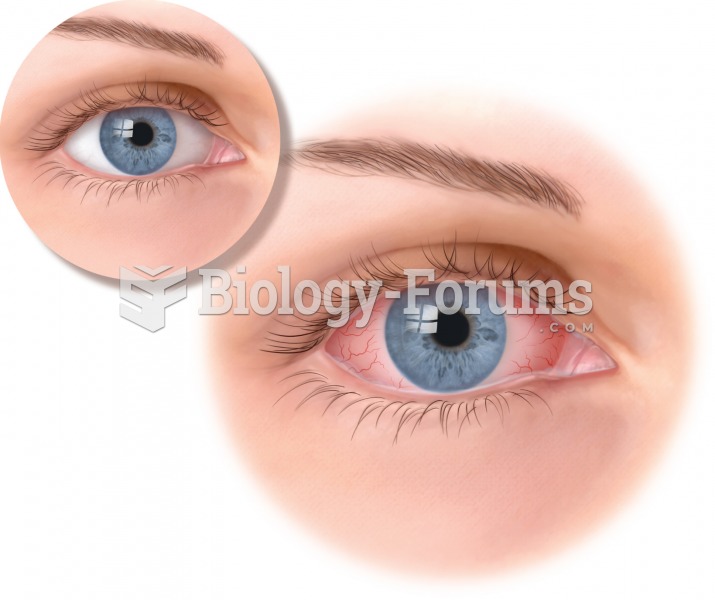|
|
|
In 1864, the first barbiturate (barbituric acid) was synthesized.
Looking at the sun may not only cause headache and distort your vision temporarily, but it can also cause permanent eye damage. Any exposure to sunlight adds to the cumulative effects of ultraviolet (UV) radiation on your eyes. UV exposure has been linked to eye disorders such as macular degeneration, solar retinitis, and corneal dystrophies.
A headache when you wake up in the morning is indicative of sinusitis. Other symptoms of sinusitis can include fever, weakness, tiredness, a cough that may be more severe at night, and a runny nose or nasal congestion.
When intravenous medications are involved in adverse drug events, their harmful effects may occur more rapidly, and be more severe than errors with oral medications. This is due to the direct administration into the bloodstream.
The toxic levels for lithium carbonate are close to the therapeutic levels. Signs of toxicity include fine hand tremor, polyuria, mild thirst, nausea, general discomfort, diarrhea, vomiting, drowsiness, muscular weakness, lack of coordination, ataxia, giddiness, tinnitus, and blurred vision.
 Conjunctivitis, with the characteristic “pinkeye” appearance. A yellow crusty exudate is also common
Conjunctivitis, with the characteristic “pinkeye” appearance. A yellow crusty exudate is also common
 Lithotripsy. The direction of a sound pulse crushes the stones into smaller fragments that can be pa
Lithotripsy. The direction of a sound pulse crushes the stones into smaller fragments that can be pa
 Sunlight on Mars is dimmer than on Earth. This photo of a Martian sunset was imaged by Mars Pathfind
Sunlight on Mars is dimmer than on Earth. This photo of a Martian sunset was imaged by Mars Pathfind




